Rising majestically above Budapest’s skyline, St. Stephen’s Basilica stands as Hungary’s most important church and one of Europe’s most impressive neoclassical monuments. Named after Hungary’s first king and completed in 1905 after more than half a century of construction, this architectural masterpiece houses the country’s most precious treasure while offering unparalleled views of the Danube and beyond.
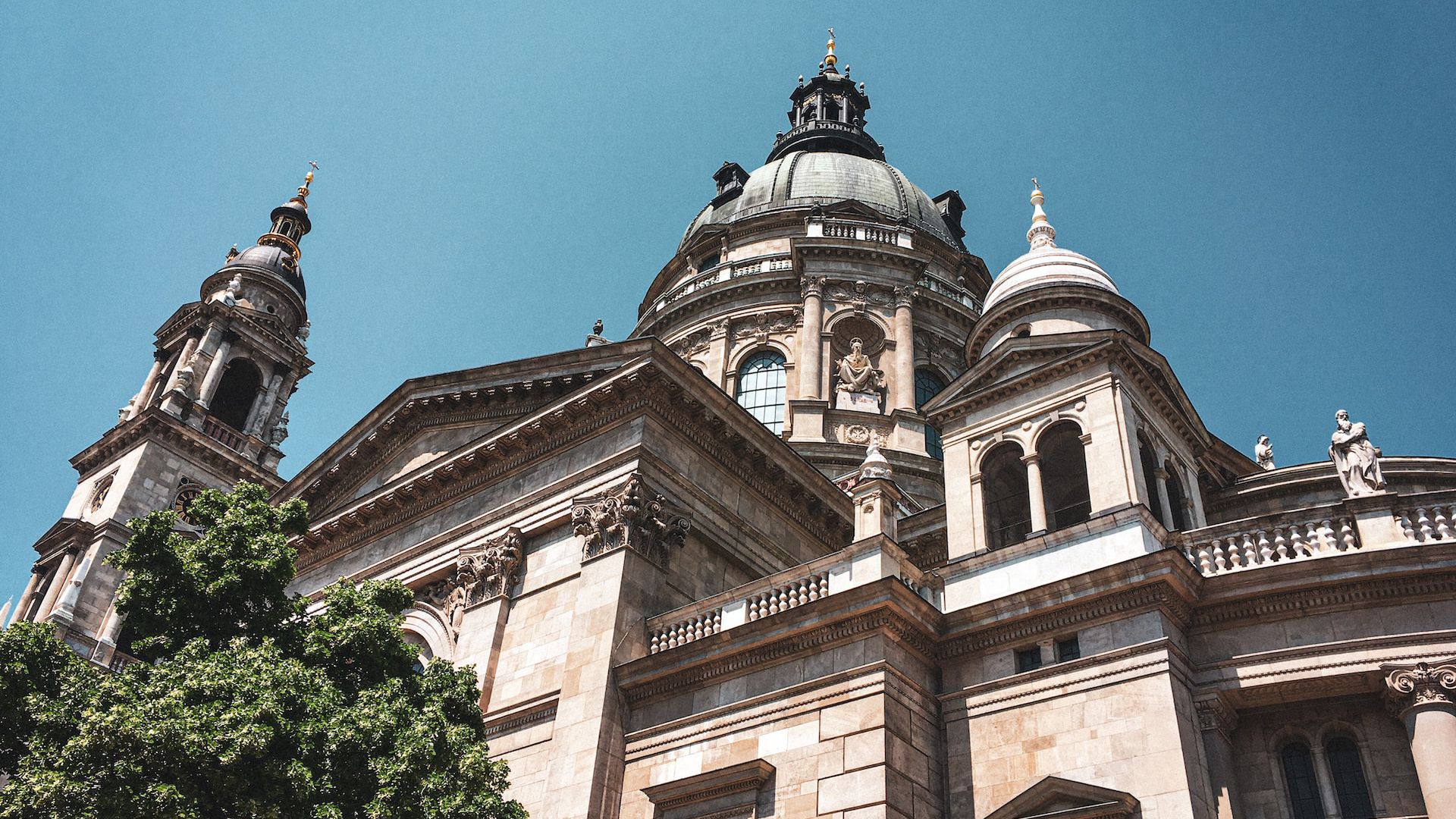
Highlights
- Marvel at Hungary’s most sacred relic, the mummified Holy Right Hand of King St. Stephen, displayed in an ornate golden reliquary that illuminates on command
- Ascend the 96-meter dome for spectacular 360-degree panoramic views of Budapest, including the Parliament, Buda Castle, and the flowing Danube River
- Experience world-class organ concerts in one of Europe’s grandest acoustic spaces, featuring a magnificent instrument with over 6,500 pipes
Tickets & Prices
Entry to the basilica requires a ticket, with several options depending on what you’d like to experience. Basic church access includes the main hall, chapels, and the Holy Right Hand chapel where you can view St. Stephen’s mummified hand.
For the full experience, upgrade to include the panoramic terrace and treasury access. The dome viewpoint offers Budapest’s best vantage point, accessible by elevator or a 364-step climb. Many visitors find the panoramic views worth the extra cost, especially at sunset when the city lights begin to twinkle.
Book online to skip entrance lines during busy periods, particularly in summer months. Fast-track tickets guarantee entry when walk-up admission might be limited. Check the official website for current rates, as pricing varies by season and includes discounts for students, seniors, and families.
- Skip The Line Entry Ticket – Enjoy quick access to St. Stephen’s Basilica, exploring its breathtaking interior, Treasury, and climbing to the panoramic terrace for stunning views over Budapest.
- Organ Concert – Experience the majestic sounds of an organ concert in St. Stephen’s Basilica, featuring works by Mozart, Bach, and Vivaldi in one of Budapest’s most iconic landmarks.
- Entry Ticket + Grand Organ Concert – Combine a visit to St. Stephen’s Basilica with a grand organ concert, enjoying access to the church, Treasury, and Dome, while listening to classical masterpieces.
Things to Know Before Booking St. Stephen’s Basilica Tickets
- Ticket Office Location: The official ticket office is located directly across the street to the right of the main entrance, not inside the basilica itself
- Online vs. On-Site: Online tickets from third-party providers (like GetYourGuide) must be exchanged at the official ticket office before entry
- Weekend Access: Church hall access may be restricted during weekend wedding ceremonies, so plan accordingly
- Holy Right Hand Viewing: Requires small coins (100-200 HUF) to illuminate the display case, not included with admission
- Dome Weather Dependency: The outdoor terrace can be windy and cold, especially in winter months
- Concert Combination: Organ concert tickets often include basilica access, potentially offering better value than separate purchases
- No Refunds for Early Departure: Full-day tickets don’t offer partial refunds if you leave sooner than planned
St. Stephen’s Basilica Tours
For deeper insight into the basilica’s fascinating history and hidden details, guided tours offer excellent value beyond simple admission tickets. Expert guides bring St. Stephen’s story to life while providing context that self-guided visits often miss.
St. Stephen’s Basilica Guided Tour with Tower Access
This comprehensive tour combines historical storytelling with full basilica access, including the panoramic dome terrace. Professional guides explain the dramatic construction story, from the 1868 dome collapse to the three different architects who shaped the final design.
Tours typically last 60-90 minutes and include skip-the-line access, making them especially valuable during busy summer months. You’ll learn about the Holy Right Hand’s adventurous journey through European courts and discover architectural details most visitors overlook.
The tower access provides the same spectacular 360-degree views as individual dome tickets, but with expert commentary about Budapest’s landmarks spread below. Guides often share the best photography spots and timing for optimal lighting.
What Makes Guided Tours Worth It
Beyond avoiding entrance queues, knowledgeable guides reveal stories that transform your understanding of this sacred space. They explain why Emperor Franz Joseph nervously watched the ceiling during the 1905 consecration, the symbolism behind the 96-meter height, and how the basement sheltered refugees during World War II.
Small group sizes ensure personalized attention and opportunities to ask questions about Hungarian history, religious traditions, and architectural techniques. Many visitors find the guided experience significantly more engaging than exploring independently.
Tours often include access to areas or perspectives not obvious to individual visitors, plus practical tips for exploring the rest of Budapest. The combination of historical context and insider knowledge typically makes the modest additional cost worthwhile.
What to See and Do
Witness the Holy Right Hand of St. Stephen
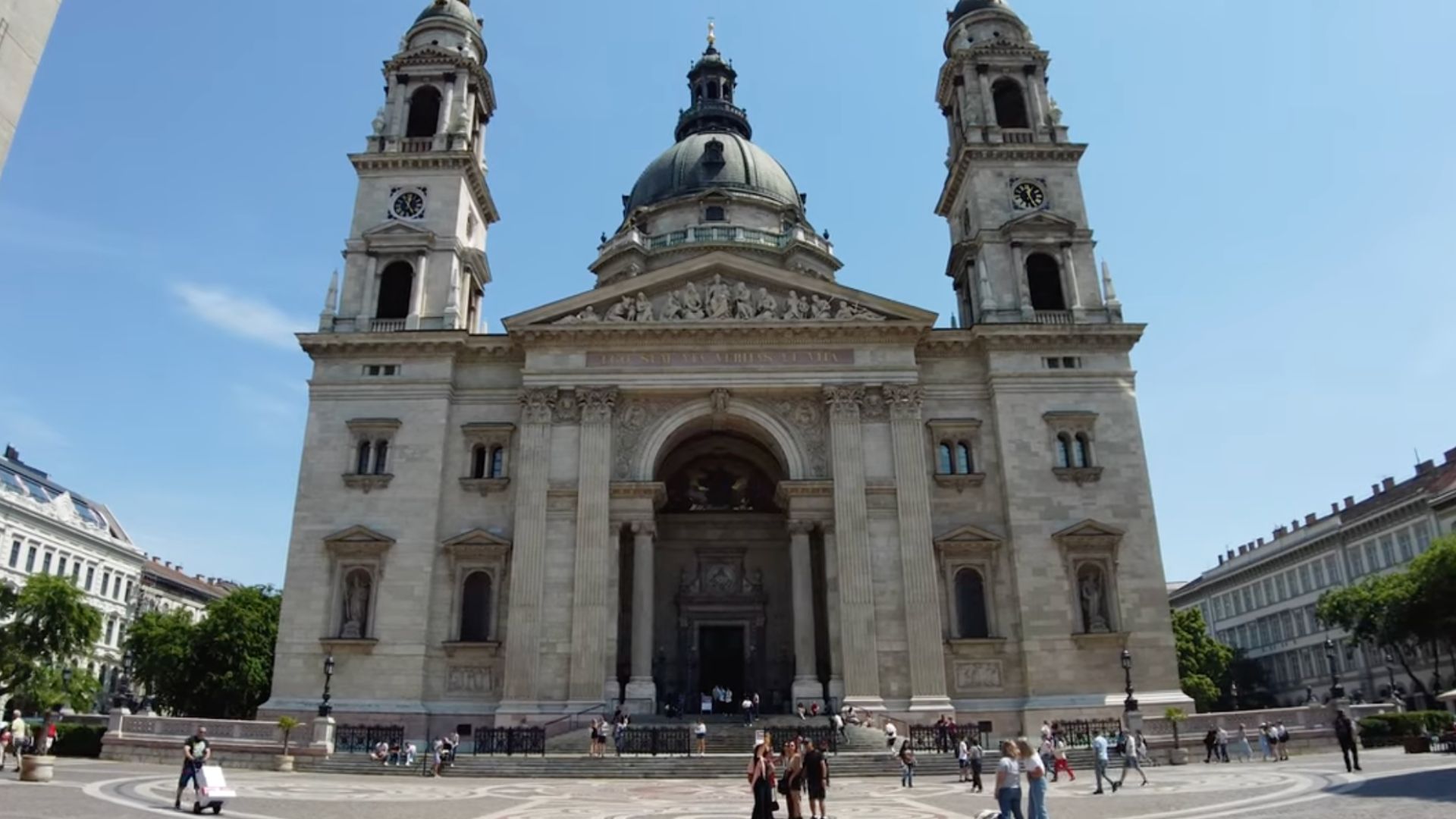
The basilica’s most revered attraction sits in the Szent Jobb Chapel behind the main altar. This mummified right hand of Hungary’s first king has survived nearly 1,000 years of tumultuous history, including secret hiding during Turkish occupation and communist suppression.
Drop a coin in the slot to illuminate the ornate golden reliquary for about a minute. The preserved fist, clenched in eternal prayer, represents Hungary’s founding and Christian heritage. Every August 20th on St. Stephen’s Day, this sacred relic leads a procession around the basilica in the country’s most important national celebration.
The hand’s survival story reads like an adventure novel. Stolen by a monastery abbot in 1061 to protect it from pagan uprisings, later moved to Croatia to escape Mongol invasions, then hidden in Vienna’s Schönbrunn Palace before finally finding its permanent home here in 1950.
Climb to the Panoramic Dome Terrace
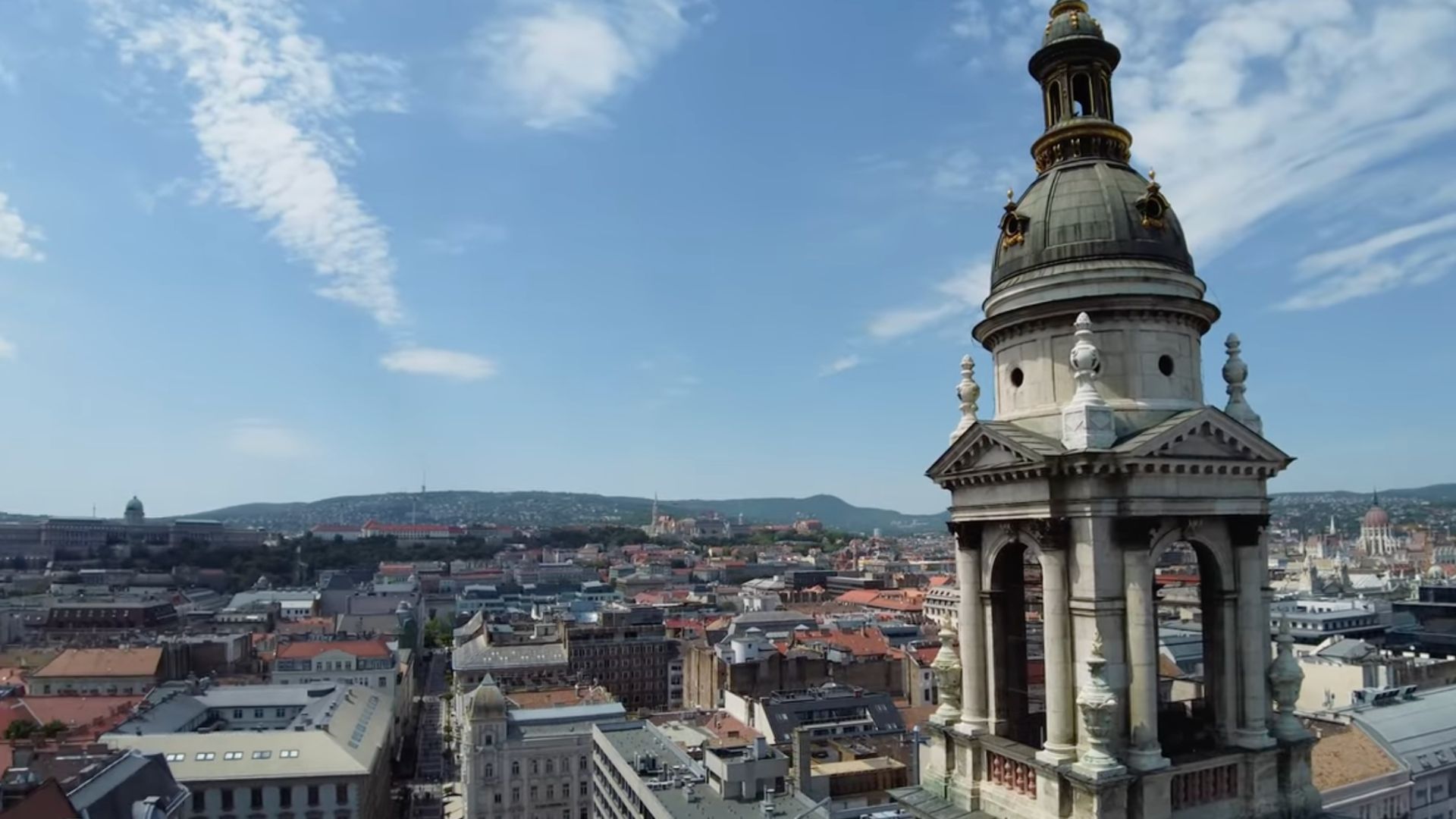
Budapest’s best viewpoint awaits 96 meters above the city streets. You can take an elevator partway up, then climb the final stairs, or tackle all 364 steps for the full experience. The journey through the dome’s inner structure adds excitement to reaching the outdoor observation deck.
From the wraparound terrace, every major Budapest landmark spreads before you. The Hungarian Parliament’s Gothic Revival spires rise across the Danube, while Buda Castle crowns its historic hill. The Széchenyi Chain Bridge spans the river below, and on clear days, you can spot thermal bath steam rising from distant locations.
The dome’s height matches the Parliament building at exactly 96 meters, symbolizing the equal importance of spiritual and worldly power in Hungarian society. Both buildings honor the year 896 when Magyar tribes first settled this land.
Explore the Magnificent Interior
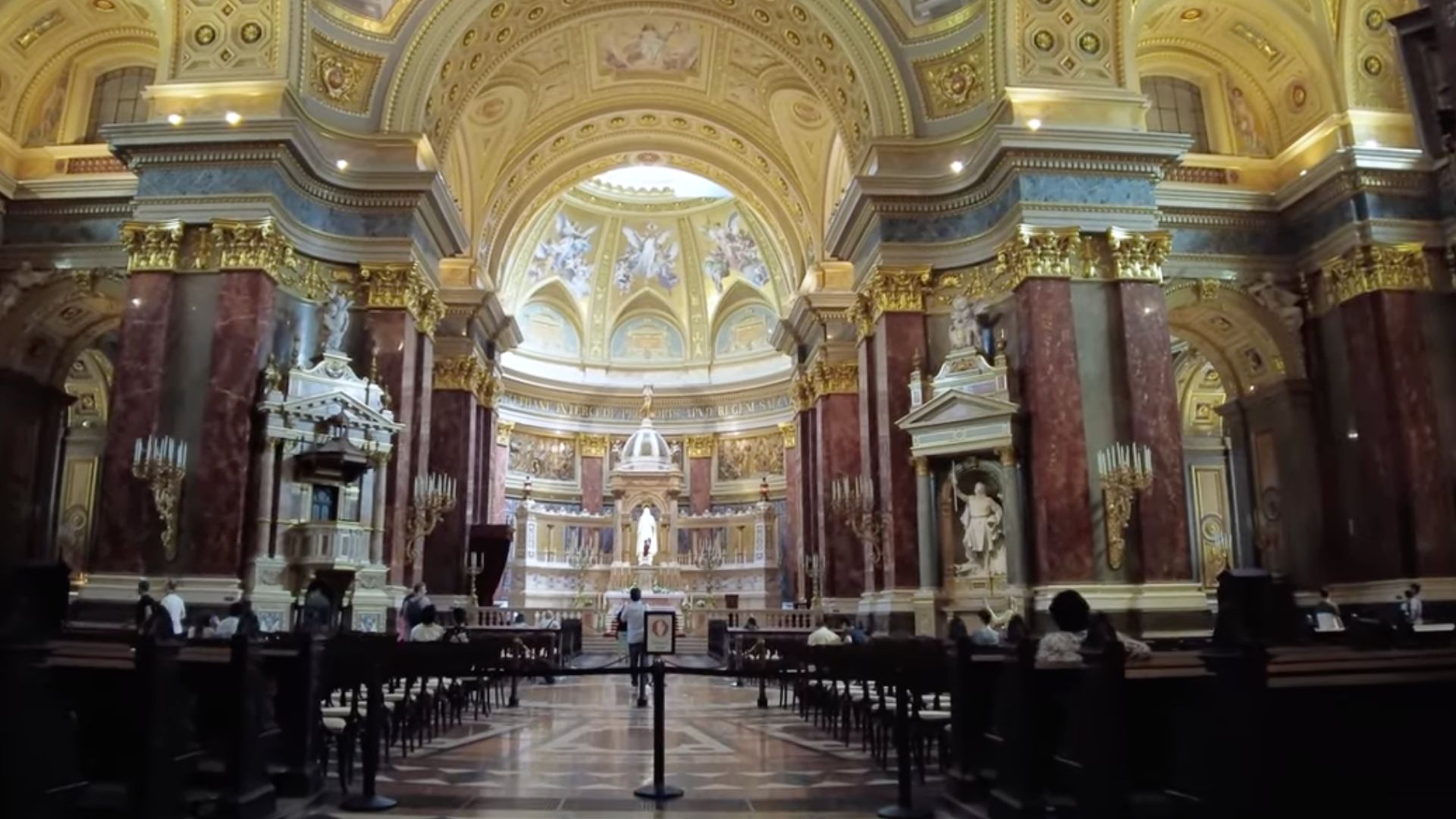
Step inside and prepare for sensory overload. Over 50 different types of marble create stunning columns, while gilded details catch light streaming through stained glass windows. The Greek cross layout can accommodate 8,500 worshippers, making it feel appropriately vast for Hungary’s national church.
Károly Lotz’s breathtaking frescoes dominate the central dome, depicting the “Apotheosis of St. Stephen” where Hungary’s first king ascends to heaven surrounded by angels and celestial beings. The vibrant colors and intricate details create an illusion of heavenly realms floating above.
The main altar features Gyula Benczúr’s magnificent painting showing St. Stephen offering Hungary’s crown to the Virgin Mary, asking her to become the country’s patron. Bronze relief panels by Ede Mayer highlight key moments from the saint-king’s life around the sanctuary.
Experience World-Class Organ Concerts
The basilica’s magnificent organ contains over 6,500 pipes and ranks among Europe’s finest instruments. Regular concerts feature works by Bach, Mozart, and Vivaldi, with the church’s exceptional acoustics transforming each performance into something transcendent.
Monday evening concerts are particularly popular, often selling out during peak tourist season. The combination of sacred setting, architectural grandeur, and musical excellence creates an unforgettable experience. Thursday concerts sometimes feature Hungary’s most celebrated organists including Kolos Kováts.
Concert tickets typically include basilica access, allowing you to explore before the performance. The interplay of music and architecture, especially when evening light filters through the windows, elevates the experience beyond simple entertainment.
Discover the Treasury
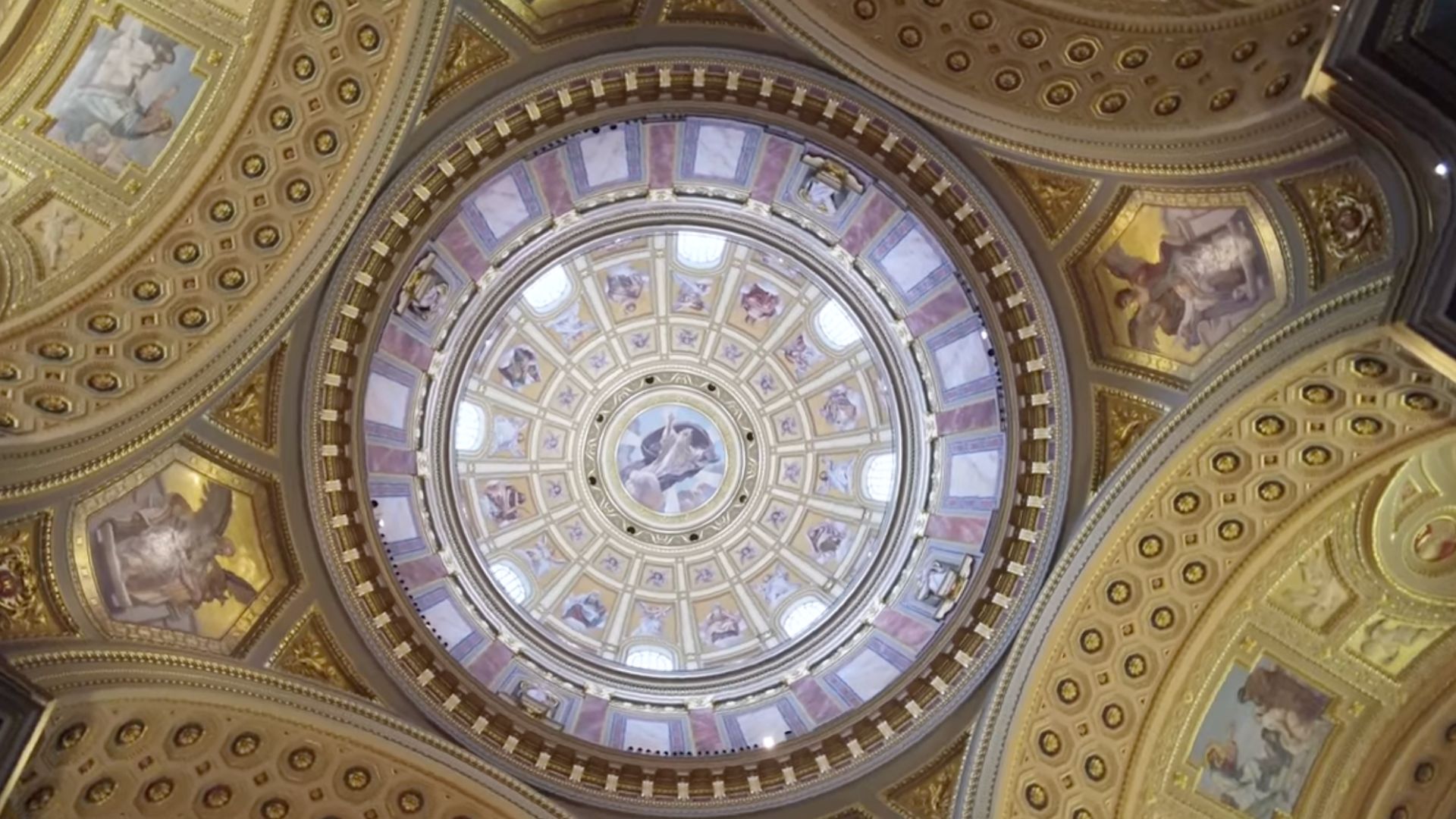
Located on the second level, the treasury houses ecclesiastical treasures including ornate chalices, religious vestments, and historical artifacts connected to Hungary’s Christian heritage. The collection provides context for understanding the basilica’s role in Hungarian religious and cultural life.
Access requires a combined ticket with the dome terrace, making it easy to explore both in one visit. The treasury’s intimate scale contrasts nicely with the basilica’s grandeur, offering detailed glimpses of craftsmanship and devotion spanning centuries.
Plan Your Visit to St. Stephen’s Basilica
Opening Hours
Church: Monday-Saturday 9am-5:45pm, Sunday 1pm-5:45pm. Ticket sales end 30 minutes before closing.
Panoramic Terrace & Treasury: Daily 9am-7pm, with tickets available until 6:30pm.
Religious ceremonies may alter access to the main church hall, especially on weekends due to weddings and special services. Check the schedule before visiting to ensure full access.
Getting There
Metro: M3 (Blue Line) to Arany János utca station, then a 3-minute walk south to Szent István tér.
Tram: Lines 2 and 23 stop at Széchenyi István tér or Eötvös tér, both about 500-600 meters from the basilica.
Bus: Multiple routes including 16 serve the area.
Walking: The basilica sits in central Pest, easily reachable on foot from most downtown hotels. The distinctive dome serves as a perfect navigation landmark.
Map & Address
St. Stephen’s Basilica Szent István tér 1, 1051 Budapest, Hungary
Nearby Places
Hungarian Parliament Building showcases Gothic Revival architecture along the Danube, just a 10-minute walk north through beautiful downtown streets.
Széchenyi Chain Bridge offers romantic Danube crossing views and connects to Buda Castle, about 8 minutes south from the basilica.
Andrássy Avenue begins nearby, leading to the Opera House and continuing as a UNESCO World Heritage boulevard lined with elegant architecture.
Vörösmarty Square features the famous Gerbeaud Café and serves as the heart of Budapest’s pedestrian shopping district.
Facilities
- Ticket Office: Located directly across the street to the right of the main entrance
- Elevators: Available for dome access and treasury visit, with accessible ramps at ground level
- Shop: Religious items, postcards, and basilica-themed souvenirs available
- Accessibility: Wheelchair accessible with ramps and elevators, though some historic areas have limitations
- Photography: Permitted throughout most areas, but be respectful during services
- Restrooms: Available on-site
Tips
- Best Time: Early morning (9am) or late afternoon for fewer crowds and beautiful lighting
- Sunset Views: The dome terrace offers spectacular sunset vistas, especially during summer months
- Concert Planning: Book organ concert tickets in advance, especially for evening performances
- Holy Right Viewing: Bring small coins (100-200 HUF) to illuminate the sacred relic display
- Weather Consideration: The dome terrace is outdoor and can be windy; dress appropriately
- Photography: Golden hour lighting through the stained glass creates magical interior shots
- Combination Visits: Easily combine with nearby Parliament tours or Danube river cruises
Other Major Churches in Budapest
- Matthias Church: Gothic masterpiece in Buda Castle District with colorful tile roof and royal history
- Great Synagogue: Europe’s largest synagogue on Dohány Street, featuring Moorish Revival architecture
- St. Anne’s Church: Baroque twin-towered beauty in Batthyány Square with intimate charm
- Calvinist Church: Fascinating oval-shaped Protestant sanctuary representing different architectural tradition
Did you know that: (5 Interesting Facts!)
- The basilica’s dome collapsed catastrophically in 1868 due to poor-quality donated stones of varying density, forcing complete reconstruction and delaying completion by decades.
- During World War II, the basement served as an air raid shelter while protecting valuable Hungarian National Archives documents from bombing damage.
- Emperor Franz Joseph reportedly kept glancing nervously upward during the 1905 consecration ceremony, still worried about another potential dome collapse.
- The building height of exactly 96 meters honors the year 896 when Hungarian tribes first settled the Carpathian Basin, and no Budapest building can legally exceed this height.
- Hungary’s largest bell weighs over 9 tons and rings only twice yearly, on August 20th (St. Stephen’s Day) and December 31st (New Year’s Eve).
History:
- 1838: Great flood devastates Pest; survivors seek refuge on the future basilica site and vow to build a church in gratitude
- 1845: József Hild commissioned to design neoclassical church with massive central dome
- 1851: Construction finally begins after delays caused by 1848-49 Hungarian Revolution and War of Independence
- 1868: Dome collapses due to poor materials and uneven weight distribution, requiring complete demolition and restart
- 1867: Hild dies; Miklós Ybl takes over, redesigning in neo-Renaissance style while preserving Greek cross plan
- 1891: Ybl dies before completion; József Kauser finishes construction according to Ybl’s modified plans
- 1905: Basilica finally consecrated in presence of Emperor Franz Joseph I after 54 years of construction
- 1931: Pope Pius XI grants “basilica minor” status, elevating the church’s ecclesiastical importance
- 1944-45: Severe bombing damage during Siege of Budapest; basement shelters refugees and archives
- 1950: Holy Right Hand transferred from Royal Palace to permanent display in the basilica
- 1980s-2000s: Major restoration projects repair World War II damage and modernize facilities
FAQs
Is St. Stephen’s Basilica free to enter?
No, St. Stephen’s Basilica is not free to enter. As of 2023, there’s an admission fee for all visitors to access the main church, chapels, and Holy Right Hand display. This replaced the previous donation-based system. You’ll need to purchase tickets at the official ticket office across the street from the main entrance.
Is it worth going inside St. Stephen’s Basilica in Budapest?
The basilica offers an incredible combination of architectural beauty, historical significance, and cultural experience. The ornate interior with over 50 types of marble, stunning frescoes by Károly Lotz, and the chance to see Hungary’s most sacred relic make it exceptional value. The panoramic dome views alone justify the visit for most travelers.
Why is St. Stephen’s Basilica famous?
St. Stephen’s Basilica is famous for several reasons: it’s Hungary’s largest church and most important religious site, houses the mummified Holy Right Hand of the country’s first king and patron saint, offers Budapest’s best panoramic city views from its 96-meter dome, and represents a architectural triumph after surviving a catastrophic dome collapse during construction.
How much does it cost to go to St. Stephen’s Basilica?
Ticket prices vary by what you want to access. Basic church entry costs around 2,000-2,300 HUF for adults. To include the panoramic terrace and treasury, expect to pay around 4,300-6,000 HUF total. Students, seniors, and children receive discounted rates. Prices change seasonally, so check the official website for current rates.
Is there a dress code for St. Stephen’s Basilica?
Yes, as an active Catholic church, St. Stephen’s Basilica maintains a respectful dress code. Cover your shoulders and knees, avoid revealing clothing, and remove hats inside. While not strictly enforced for tourists, dressing modestly shows respect for the sacred space and other visitors who may be there for worship rather than sightseeing.
